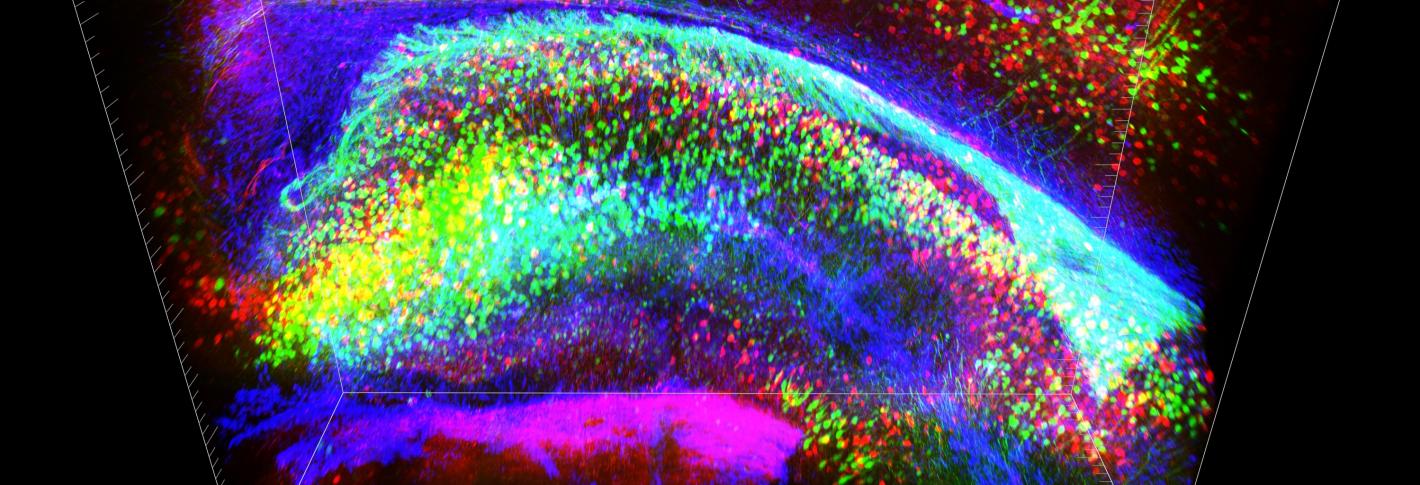In 2013, Kwanghun Chung and colleagues at Stanford revealed that years of work had opened a whole new window of neuroscience visualization when they unveiled CLARITY, a tissue processing technique that makes thick tissues transparent, while preserving the structures and molecules within. That feat of biochemistry meant that whole rodent brains could be labeled and imaged, creating stunning and highly informative 3D pictures of neural anatomy.
Described in a paper in Nature, CLARITY works by replacing the opaque but structurally crucial lipids in brain tissue with a clear hydrogel that forms a mesh throughout the brain. That mesh holds everything in place except the lipids, which can then be extracted.
CLARITY also makes it easier to infuse the brain with fluorescent molecules that can label different cells. That allows scientists to get a clear picture of neural anatomy, including large scale circuits. Over several rounds of such labeling, researchers can build complex and colorful pictures of the diverse and intricate anatomy of the brain.
Innumerable labs have now gone on to use CLARITY, a proliferation of technology that the Chung Lab actively encourages.


